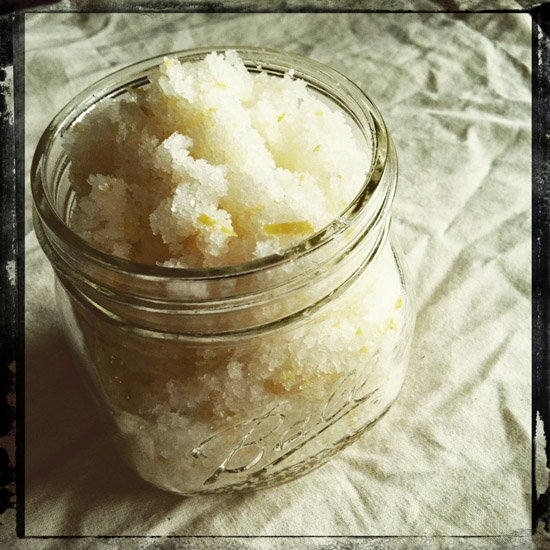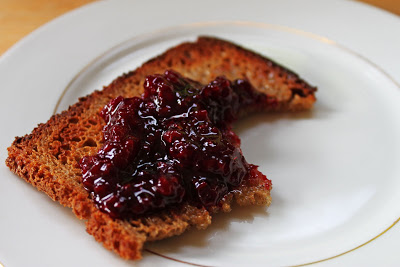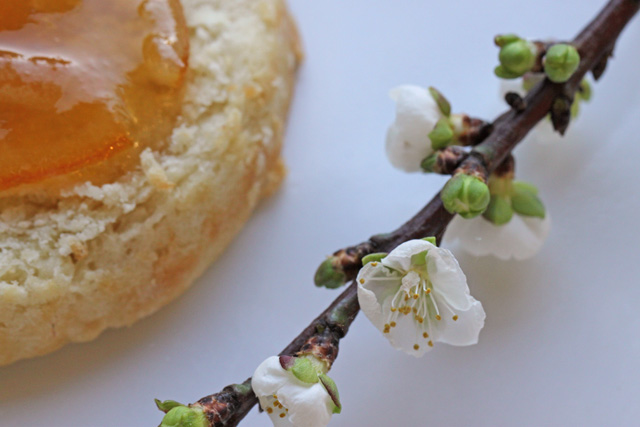I’ve been waiting all year to try this recipe, but when the time came, I was almost too lazy to do it. The end of October Can Jam week was rapidly approaching, and I just didn’t want to get off my butt and deal with a pile of slippery peppers. My eyes kept sliding over to my great big bag of quince, which I can’t stop thinking about.
The thing is, it is totally worthwhile to preserve these guys in the fall.
You know that red bell peppers are one of the dirty dozen, right? If you don’t grow them yourself or buy organic, you don’t want to eat them. This year, growing them wasn’t a great option in the Bay Area. We had too much rain in the spring and too much cold in the summer. I grew a handful of small peppers and was thrilled to have them, but a canning project they would not make.
And buying organic red peppers at any other time of year is notoriously bad for the budget. They were going for $8 per pound (gack!) in the summer. Now’s the time.
So I’ll leave the hot peppers to those kinky girls at Tigress in a Pickle, Local Kitchen (thank you, Kaela, for holding our feet to the fire and making us can peppers this month), and Grow and Resist. For me, there’s nothing like roasted reds.
Peppers are a low-acid food and you must take care when canning them. To ensure safety, I began with a recipe from Well-Preserved, by Eugenia Bone, and I changed only the seasonings. Then I contacted the Master Food Preserving program at UC Davis to ensure that what I did was safe. I would be really sad if I killed any of you nice people, you know? A certified master food preserver confirmed that this recipe is sufficiently acidic and gave me the green light. (If you’re concerned about the inclusion of olive oil, see the update at the bottom of the post.) And, hey, did you know that you can do that, too? If you have questions about whether or not a recipe is safe, get in touch with the good people at your state’s cooperative extension office. That’s what they’re there for!
The flavors in this recipe are inspired by my dear friend Helen’s method for roasting red peppers. Helen is in her eighties and grew up in Oroville, California. Her family is of Spanish descent. And I have a thing for Spain. Let’s go there, shall we?
Pimientos Rojos
4 pounds red bell peppers
1 cup bottled lemon juice (use only bottled juice to guarantee acidity)
2 cups white wine vinegar (5% acidity)
1 cup olive oil
1/4 cup slivered white onion
1 1/2 teaspoons smoked paprika
1/2 teaspoon thyme
1/2 teaspoon black pepper
1 1/2 teaspoons salt
3 bay leaves
1. Place an oven rack about 7 inches below the heat source and preheat the broiler. Start heating a large pot of water for scalding several pint jars and have a small pan of water ready for simmering your jar lids. (See Step 5.)
2. Snip the stems off the red peppers and place them on an ungreased baking sheet. Char them under the broiler for about 20 minutes, using tongs to turn them frequently so they blister all over.
3. Remove the peppers from the oven and let them cool until you can handle them. Peel the peppers, cut them in half, and remove the seeds. (I find them easiest to peel if I begin from the base of the pepper. If they’ve gotten soft, the peppers may tear as you peel them. Don’t worry about it. Just tear them into large pieces and skip the “cut them in half” step.)
4. In a medium saucepan, combine the lemon juice, vinegar, olive oil, onion, paprika, thyme, salt, and pepper. Bring to a gentle boil.
5. Scald 3 pint jars by immersing them in boiling water. (There’s no need to sterilize the jars, because you will process the peppers for more than 10 minutes.) Simmer the jar lids for just a moment in a pan of hot water, then let them rest there.
6. Pack the peppers into the scalded jars and cover with the hot marinade. Add one bay leaf to each jar. Use a small silicone spatula or other soft tool (like a chopstick) to “bubble” your jars. (That is, work the spatula into the peppers and run it around the inside of the jar to release air pockets.) Leave 1/2- to 3/4-inch head space to ensure a proper seal. (This is important. The peppers will swell during processing.)
7. Process in a water-bath canner for 15 minutes and wait a few weeks before tasting. If you have leftover marinade (I sure did), save it for salad dressing.
Yields about 3 pint jars
Update: November 14, 2011
Over the course of the year since I posted this recipe, a few people have specifically asked about the oil it contains. Recently, I consulted a second master food preserver to learn a little more about the issue. She confirmed that the recipe is safe — that is, plenty acidic enough to impede botulism growth, even with the presence of a cup of olive oil.
It’s worth noting, however, that the inclusion of oil may reduce shelf life in some recipes. Oil presents an increased risk of flavor changes or even rancidity. The recommended shelf life for most preserves is about one year. For these peppers, you might consider tightening that up a bit. When you do pop the lid, if you notice anything at all off about them — appearance or smell — toss them out. On the other hand, you may decide to simply forgo canning and stash your marinated peppers in the fridge. (I’d already thought about that, but that was because we ate all of ours in just a few weeks. It was hardly worth the effort of canning them!)









